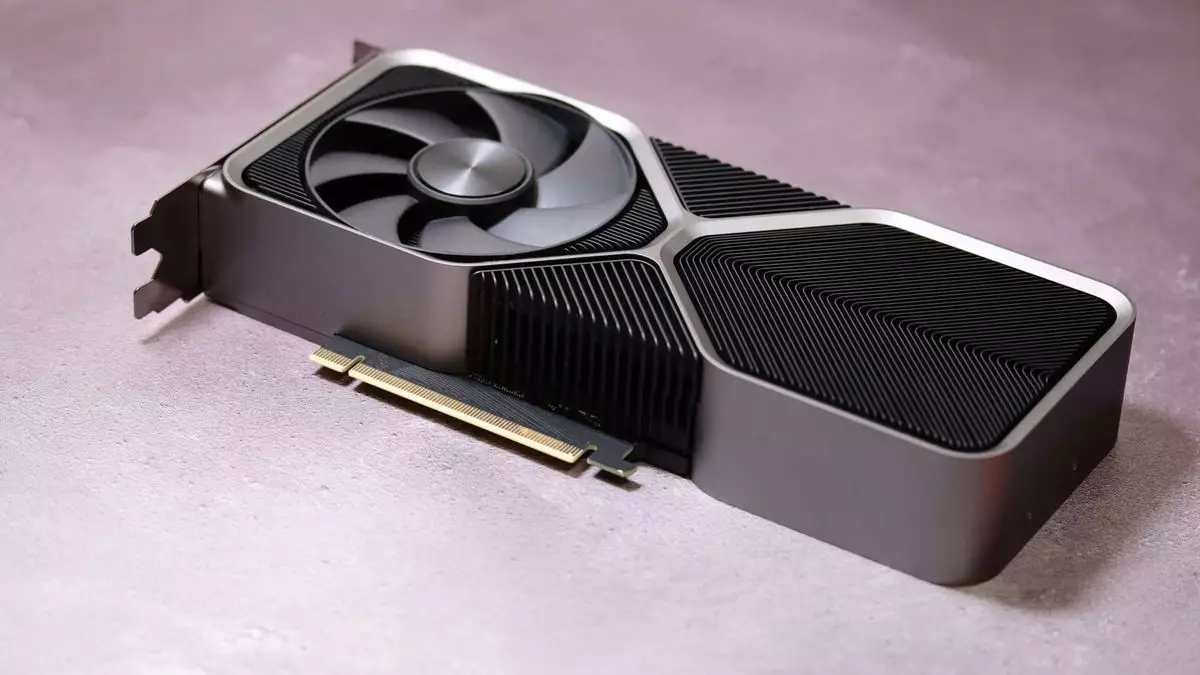As we anticipate the year ahead, the world of graphics processing units (GPUs) is buzzing with speculation about Nvidia’s next generation of GPUs. As confirmed reports trickle in, we find ourselves on the brink of a significant unveiling at CES 2025, scheduled for January of next year. A vital point of discussion within the community revolves around the rumored release of multiple graphics card models, including the anticipated RTX 5070, alongside the high-end RTX 5080 and RTX 5090. This article aims to unpack these emerging details and speculate on their implications for gamers and the tech industry.
Traditionally, Nvidia has adhered to a launch strategy that favors showcasing its most powerful GPUs before introducing mid-range options. What makes this upcoming reveal particularly interesting is the inclusion of the RTX 5070 alongside its more powerful counterparts, which diverges from Nvidia’s usual approach. The decision could signal a shift in marketing strategy, aimed at capitalizing on a growing mid-range market—a segment that often finds itself overlooked in favor of high-end specifications. This pivot not only caters to a broader audience of gamers but also strengthens Nvidia’s position amid heightened competition.
Reports from Wccftech suggest that the RTX 5070 will feature a 12 GB VRAM capacity, partnered with a 192-bit memory bus. This design is poised to offer a significant 33% increase in memory bandwidth over the preceding RTX 4070 series, largely thanks to the new GDDR7 VRAM integrated within. Critics have expressed concerns that this VRAM limitation might be a tactic to nudge high-end gamers toward more expensive cards for the best 4K experience. Despite these apprehensions, there are valid arguments suggesting that VRAM size may not be the sole determinant of gaming performance. Nvidia has emphasized the importance of cache memory—L1 and L2 caches—to optimize data retrieval, making a case for performance innovation beyond merely increasing VRAM.
Interestingly, the projected power draw for the RTX 5070 is estimated at 250 watts, which marks an increase from the 200-watt draw of its predecessor. Power consumption continues to be an essential factor for gamers, contributing to the overall efficiency and thermal management of their systems. In contrast, Nvidia’s high-end cards, such as the RTX 5090, may peak at a staggering 600 watts, underscoring that power demands remain a crucial consideration for serious gamers.
As Nvidia gears up for the CES 2025 showcase, the presence—or lack thereof—of a competing AMD release looms large. AMD is expected to unveil its RDNA 4 GPUs around the same time, which raises questions about strategic positioning within the mid-range and high-end markets. AMD’s RX 7800XT, despite boasting robust specifications, has struggled in sales, which may give Nvidia a sense of confidence in its product lineup. Yet, a lingering doubt remains: Could Nvidia’s decision to offer a seemingly limited VRAM configuration be a daring gamble within a competitive landscape?
The backlash over VRAM availability has precedent, notably evident during the RTX 4060 Ti debacle, which saw Nvidia intermittently releasing a 16 GB variant. This kind of reaction illustrates the delicate balance Nvidia must strike between consumer demand and the realities of performance differentiation.
While performance specifications and architectural innovations generate excitement, pricing remains a critical factor in Nvidia’s strategy. The enduring success of the RTX 4070, attributed to its relatively approachable price tag of $599, sets a benchmark for the RTX 5070. Gamers and tech enthusiasts will be keeping a close watch to see if Nvidia can maintain this equilibrium of performance versus affordability. An attractive price point paired with reliable performance could reaffirm the RTX 5070 as a staple solution for gamers amid sturdy competition.
Ultimately, as we approach CES 2025, the anticipation builds for what promises to be an exciting array of graphic cards that could reshape the market. The combination of innovative technology, competitive pricing, and adaptive marketing strategies will likely define Nvidia’s trajectory in a landscape rich with opportunity and challenges. As rumors swirl and excitement mounts, the coming months could usher in a new chapter for graphics technology, bridging the gap between high performance and accessibility.

